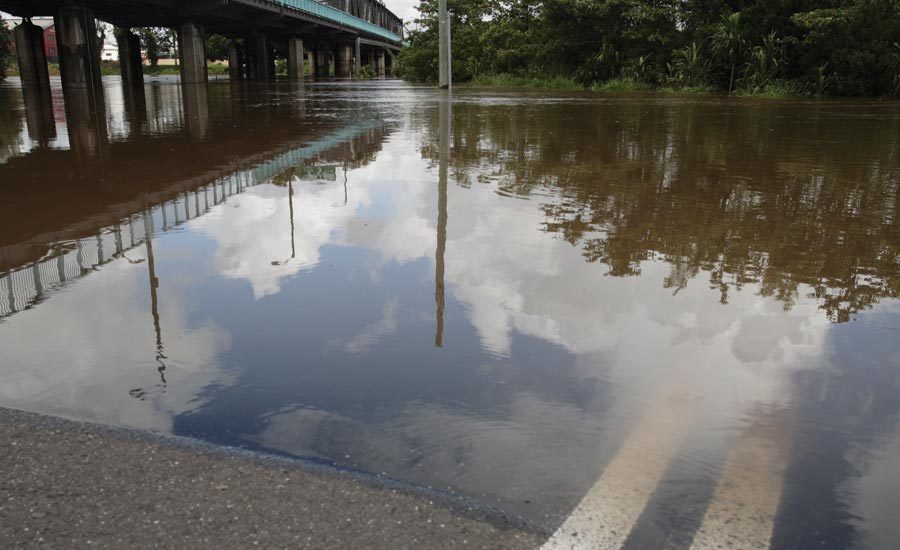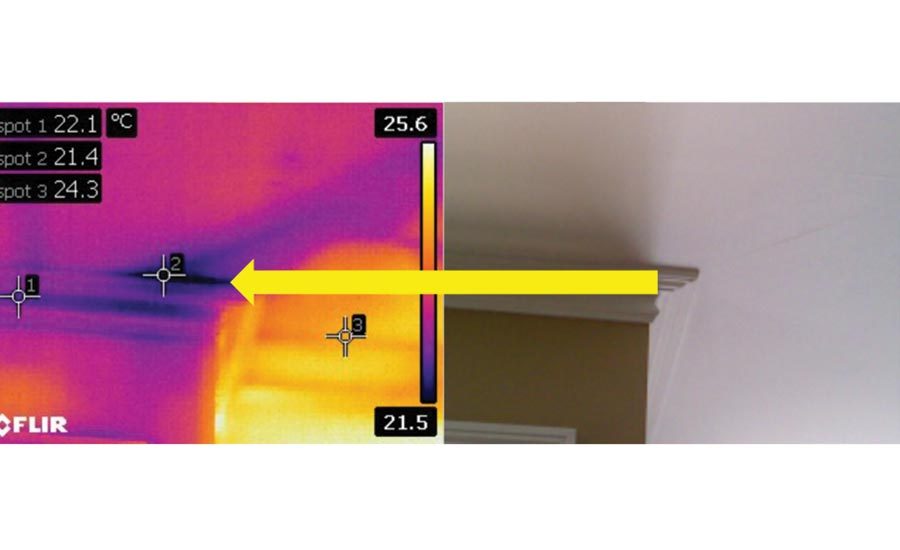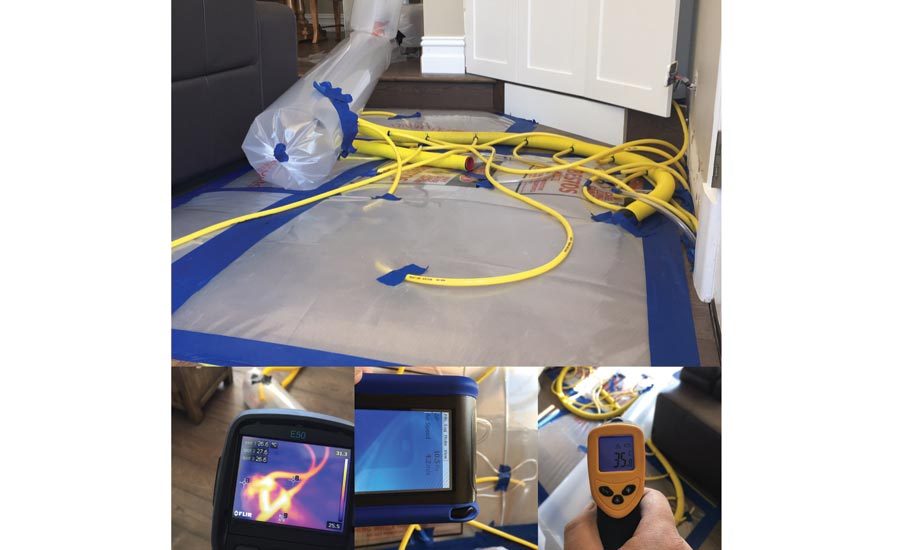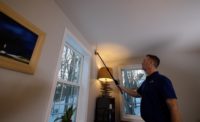Responding to Melbourne’s Holiday Flash Floods

(Photos courtesy of Ivi Sims.)

(Photos courtesy of Ivi Sims.)

(Photos courtesy of Ivi Sims.)

(Photos courtesy of Ivi Sims.)




In mid-December, those of us in the Australian state of Victoria believed it was going to be a dry and hot summer. After a very hot couple of days in a heat wave in Melbourne, we were asking, “where is our summer rain?”
Well lo and behold on Dec. 29, at around 4:50 p.m., we had a massive flash flood. The Bureau of Meteorology recorded 18.4 millimetres (0.72 inches) of rain, and more than 1,200 calls made to Victorian state emergency department. Insurers reported more than 2,500 water damage claims.
My business, Disaster Equipment Rental, had all its equipment booked out and deployed by noon on Dec. 30 to help as many as we could. All suppliers of water damage equipment were out of stock by the following day.
Restoration companies begged for more equipment from other states to cope with the massive influx of work coming in when many suppliers were on Christmas breaks. It was a CAT loss situation that required quick work, and the ability to problem solve quickly to dry homes and other buildings fast.
The Scope of Work
Here is the scope of the job focused on in this article:
Water ingress from an overflowing gutter affected a ceiling, drywall, skirting, concrete floor and wood floor, being a total wall and ceiling area of 18 m2 (approx.. 194 sq. ft.), and a total floor area of 16 m2(approx.. 172 sq. ft.).
The tools used to establish the extent of water damage comprised a:
- Borescope,
- Hygrometer,
- Thermal imaging camera,
- Moisture meters (pin & non-penetrative)
- Laser temperature gun
- Hot wire anemometer
The borescope was inserted into the kitchen cavity to inspect behind kitchen cabinets. In so doing, I could see where the water tide line was against the concrete adjacent to the cabinet. I used my hygrometer and determined the subfloor space had a relative humidity of 85% RH at 22C°.
A non-penetrative moisture meter gave a reading of 18% WME at a material depth of around 40mm in the flooring. The pin-type meter was employed for moisture measurement in the dry wall/skirting and wood floor areas, resulting in a reading of 30% WME reference to Douglas Fir to about 25mm, and showing clear moisture in the corner of celling area (see thermal images below).
Engineering Setup
By placing plastic sheeting in a horizontally “lay-flat” design, and sealing with 40mm duct tape, I set up my innovative drying system using the process heat of a dehumidifier to push low-height, dry-air-flow heat to the wood floor.
Skirting was removed to provide a 10-12 mm gap which was used to push the warm, dry air through a 6mm tube into the space. A release point for moisture was achieved by leaving about 1.5 meters of the skirting gap open so the dehumidifier could draw air back out from the space, and condense it in the dehumidifier.
A connector was added to the lay-flat to introduce process air to the ceiling as shown in the photo. The 40mm tube which was inserted to the lay-flat was used to dry the concrete using the process heat coming from the dehumidifiers.
On day three, we could see heat was coming from process air of the dehumidifier (see below).
Manometer and anemometer readings showed an achieved an airflow of 4.2 m/s, being a slow velocity (see below). The laser temperature gun indicated a surface temperature of 35C° in the tent, whilst the non-penetrative meter measured a 2% relative humidity drop through the system, with the pin-type meter measure at 26C°. It must be noted that we had two hot dry days which assisted the drying process.
On day seven, the wood floor moisture was between 12 and 14% WME, with skirtings and walls holding 10% WME. This suggested dry materials. The moisture in the wall cavity indicated wet conditions, being 43% RH in the cavity behind the kitchen cabinet. This showed dried conditions, with a reduction of 42% in RH compared to pre-drying.
Lack of Equipment & Manpower
Many Victoria-based restoration organizations had to overcome business barriers from lack of equipment or manpower. Melbourne has learned a lot during the five years since a previous flash flood event. Our technical skills in structural drying improved through restorers taking training in the USA, Europe or at the local Jena Dyco International facility in Melbourne, which offers IICRC certification.
Last year, four restorers travelled from Melbourne to gain their advanced certificates in remediation: Certified Restorer, Water Loss Specialist and Certified Mold Professional under RIA certification.
I interviewed three major companies in Melbourne and asked them what their thought was and what to improve:
Joe Bonfa
(Managing Director - Flood Restoration Australia)
“We did more than 400 claims in a short period of three days. We were pressed for time to get to the claim and help our clients and ensure safety and quality of the job, but sacrifice was not an option. We used the thermal imaging camera to help us to get a quick snap shot of the water damage, so we could deploy the correct equipment quickly and effectively. Collaboration with our existing working partner allowed us to move through the claims. Reinvestment is their biggest commitment. “
Mehmet Ucar
(Managing Director - Quantum Restoration)
“We were given more than 300 claims. Our technicians are all trained in WRT and are Advanced Moisture Restoration Technicians. CDS helped us with completing these claims in a timely manner. In this storm, we took snap shots of water damage by using thermal imaging. This helped us to understand the damage building and water ingress location, and to effectively deal with it. In this storm, we needed to focus in optimal deployment of equipment to allow all jobs to be serviced.”
Oliver Threlfall
(CEO - Steamatic Australia)
“There are a few points to consider when you get an influx of work. Our national office had over 1,000 claims. Establishing good information-gathering systems when receiving jobs allowed triage to be deployed to get right personnel and equipment to the right jobs. Resource-tracking of equipment or personnel was critical to maximize efficiency. Using multiple communication mechanisms for a large number of clients (telephone, email, SMS, web etc.) was critical. Making sure the employee is not over loaded and over worked (fatigue management) increases productivity and great outcomes. Everyone must work just as hard even the upper management level. Motivation and reward is especially important during this time, even if it is just a pizza or BBQ, it can go a long way. Also we made sure we tell our staff when work is close to completion.”
Looking for a reprint of this article?
From high-res PDFs to custom plaques, order your copy today!












